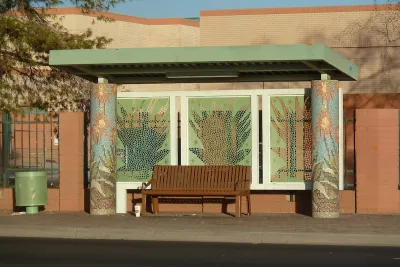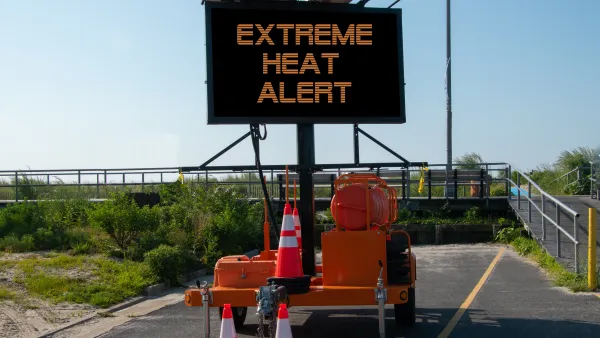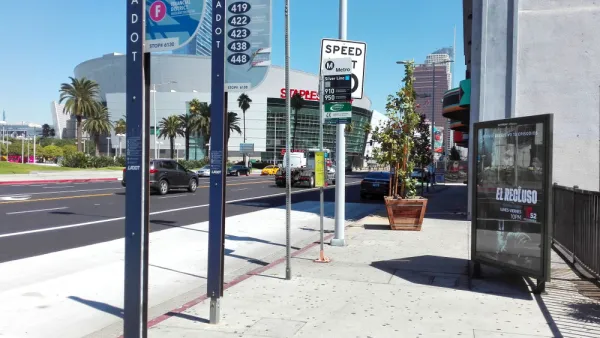The city’s updated Shade Master Plan calls for trees and built structures at bus stops to protect residents from heat.

A “shade plan” developed by the city of Phoenix takes aim at extreme heat with street trees and “engineered shade” to protect residents at bus stops and in other public spaces. As Ysabelle Kempe notes in Smart Cities Dive, “The recently approved plan is an update and expansion of Phoenix’s 2010 Tree and Shade Master Plan.”
The new plan takes a more focused approach to shade, targeting bus stops first. The new approach comes in part as an admission that the city can’t afford to meet its initial blanket goal of shading 30 percent of Phoenix by 2030, but also refocuses efforts on communities that currently lack shade infrastructure. According to Jacob Koch, who helped the city create the plan, “We want to increase the canopy in the places that need it most and that have not had the same level of investment and public infrastructure, historically.”
According to Kempe, “City officials in Phoenix know that more must be done to increase shade beyond the actions outlined in the plan. The document specifically calls out the need to secure more sustained funding sources for this work and to improve the budget and practices for maintaining trees and built shade structures.”
FULL STORY: Not just trees: Phoenix’s $60M shade plan includes built structures, too

National Parks Layoffs Will Cause Communities to Lose Billions
Thousands of essential park workers were laid off this week, just before the busy spring break season.

Retro-silient?: America’s First “Eco-burb,” The Woodlands Turns 50
A master-planned community north of Houston offers lessons on green infrastructure and resilient design, but falls short of its founder’s lofty affordability and walkability goals.

Delivering for America Plan Will Downgrade Mail Service in at Least 49.5 Percent of Zip Codes
Republican and Democrat lawmakers criticize the plan for its disproportionate negative impact on rural communities.

Test News Post 1
This is a summary

Test News Headline 46
Test for the image on the front page.

Balancing Bombs and Butterflies: How the National Guard Protects a Rare Species
The National Guard at Fort Indiantown Gap uses GIS technology and land management strategies to balance military training with conservation efforts, ensuring the survival of the rare eastern regal fritillary butterfly.
Urban Design for Planners 1: Software Tools
This six-course series explores essential urban design concepts using open source software and equips planners with the tools they need to participate fully in the urban design process.
Planning for Universal Design
Learn the tools for implementing Universal Design in planning regulations.
EMC Planning Group, Inc.
Planetizen
Planetizen
Mpact (formerly Rail~Volution)
Great Falls Development Authority, Inc.
HUDs Office of Policy Development and Research
NYU Wagner Graduate School of Public Service





























